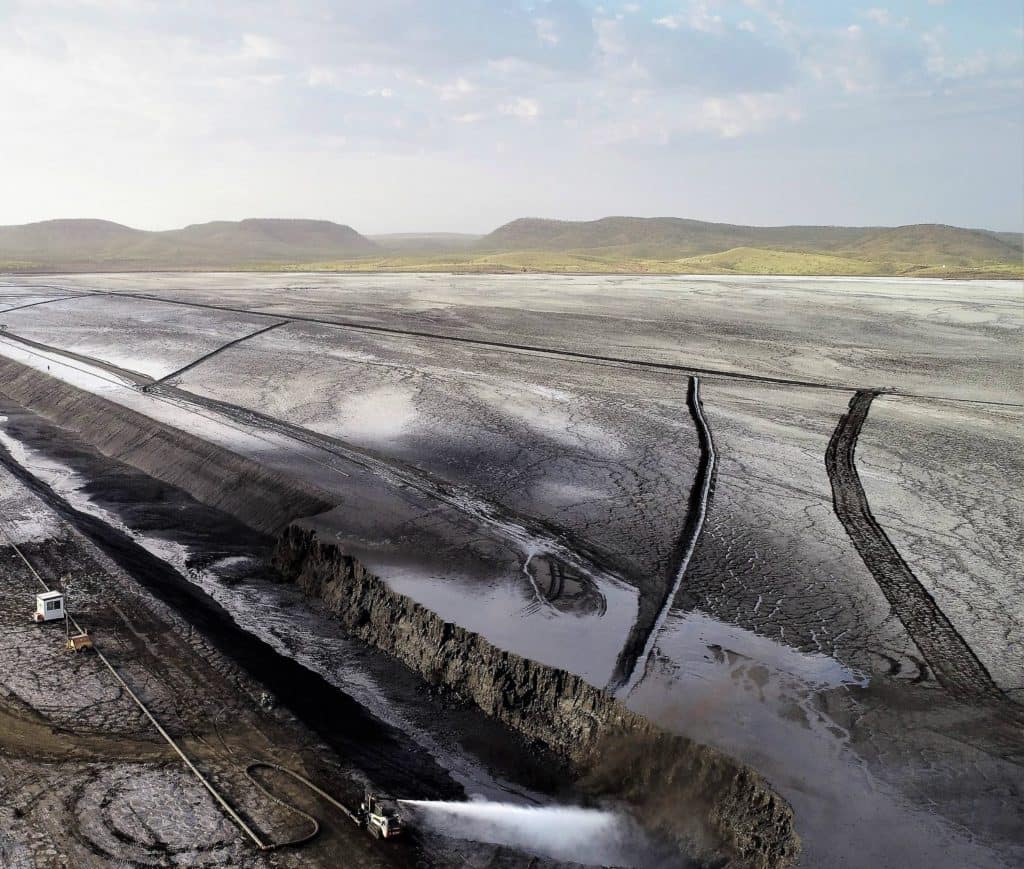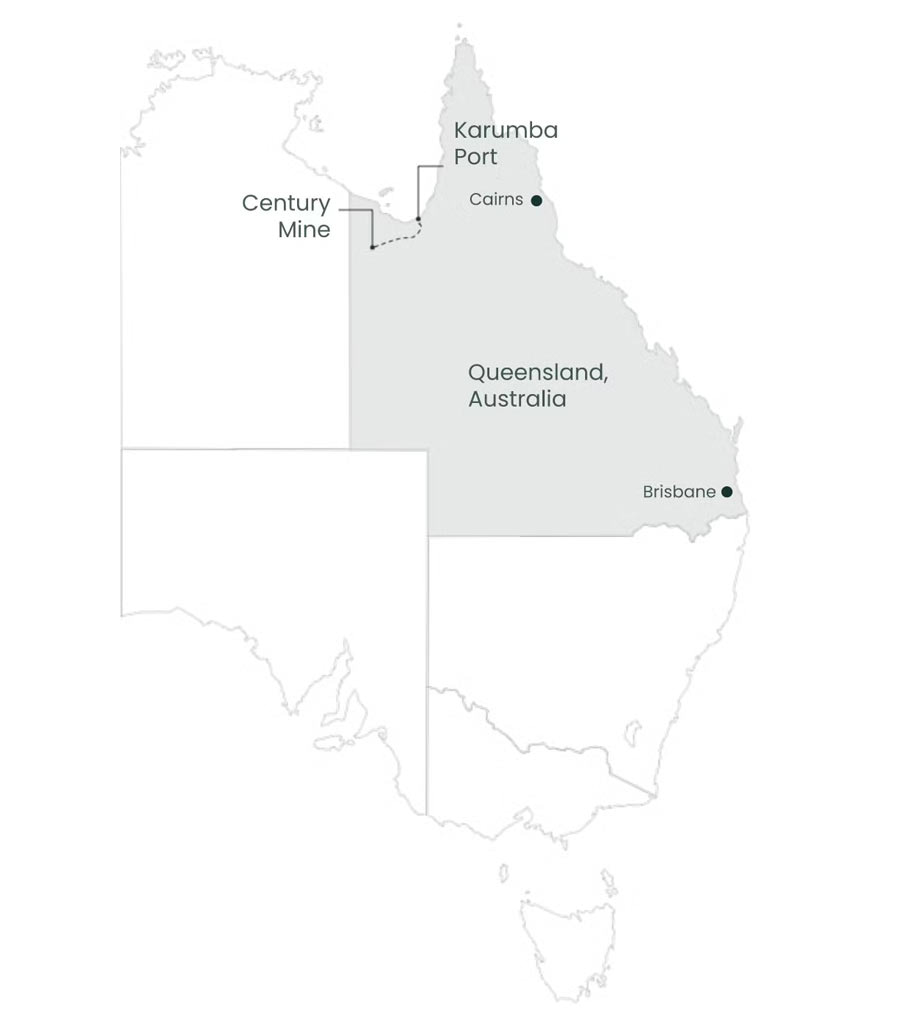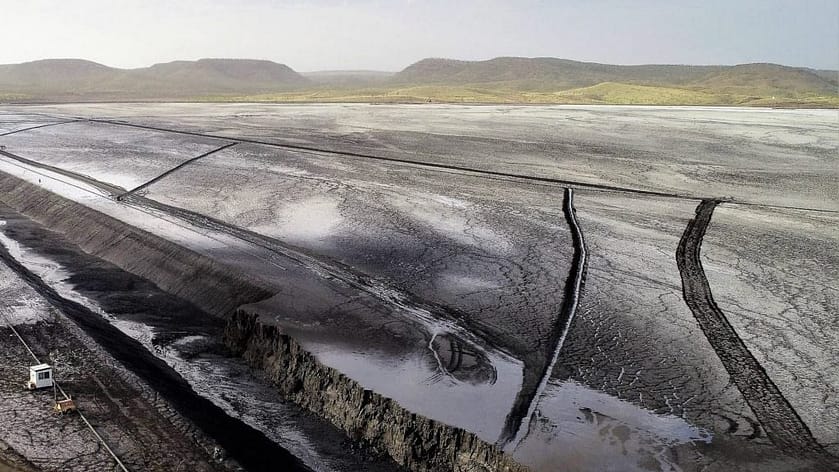News
Century’s rehabilitation success: 3 insights that could transform how you think about tailings

In 2015, MMG’s Century Mine in Australia ceased operations after 16 years. Once the world’s third-largest zinc mine, it had accumulated 79 million tonnes of tailings and carried a $387M closure provision on the balance sheet.
Just five years later, the mine’s new owner, New Century Resources, reduced that closure cost to just $73M and created more than $776M in value. The success of their economic rehabilitation strategy was based on three key insights into the true value of tailings.
These insights could transform how the mining industry approaches tailings. Applied to your own sites, you could find new ways to create value, restore and repurpose land and water, and enhance your license to grow.
Century mine’s closure and acquisition

Century’s mine closure plan included capping and re-seeding the tailings storage facility, waste rock dumps, and emptying over 13 gigalitres of water from the evaporation dam. They also had to dismantle all the other infrastructure, installed at an estimated cost of more than $2 billion in 1999.
However, the tailings still contained 2.4 million tonnes of zinc making it the 14th largest economic reserve of zinc globally.
So, why didn’t MMG use tailings reprocessing to fund restoration?
Conventional rehabilitation
MMG’s decision to conduct conventional rehabilitation was sensible, one that most mining companies would make. Its portfolio of mines all required capital which, on paper, would have delivered a better return of investment. They knew their tailings were potentially valuable but strategically chose to focus on developing and operating mining projects.
Then New Century Resources stepped in, led by co-founders Patrick Walta and John Carr, to acquire the mine from MMG in 2017. Over the next five years, they economically rehabilitated the land and water to generate almost $1.4 billion in value.

Tailings: unavoidable, expensive, but highly valuable
Tailings are unavoidable and risky. Most mines build enormous tailings storage dams that must be controlled and monitored for decades — this is expensive and creates huge balance-sheet liabilities.
The risk of dam failure also endangers people around the world. Such disasters have ruined communities and the reputations of the mining firms involved. Tailings dams and mine waste also occupy substantial areas of land which is wasteful and inefficient.
Tailings also present a massive opportunity because they hold vital, unrecovered minerals and water.

“We acknowledged that tailings are an important part of mining, but the way we dealt with them as an industry was unsustainable. We felt it was no longer acceptable for them to be a waste product that polluted the land and water,” explains John Carr.
“We knew that sticking with the current approach to tailings management would only make the problem bigger.”
Clever operators can generate a net environmental and economic gain if they address the negative and harness the positive.
At Century Mine, MMG followed best practices at the time by using standard processing methods but ran the site to maximise production at the expense of recovery, which sent zinc and silver to tailings.
When New Century took over, their first step was to abandon traditional rehabilitation methods in favour of a more restorative approach: economic rehabilitation. And it paid off.
In less than 10 years, the mine will no longer have a tailings dam and the land will be returned to its natural state. The site is well established to provide sustainable metal production for years to come.
Insight #1: Economic rehabilitation generates a “value multiplier effect”
New Century developed an economic rehabilitation strategy to transform tailings into useful elements:
When you think of tailings as metals, water, and land it has a cascading “network” effect on the value of your mine.

“It’s a 180-degree change to how mining operations view tailings waste and mine closure,” explains Patrick Walta.
“It’s not just about metal units…
Thinking about tailings rehabilitation as an integral part of the whole mining operation unlocks the real value: new revenue streams, lower liability, unlocked in-ground resources, new industries, and a platform to grow.”
“We knew the only way to realise this value at Century was to own the entire asset. We were the only company which outlined a plan whereby if we win, MMG wins.”
New Century’s economic rehabilitation strategy focused on four interconnected principles:
- Release metals, minerals, water, and land
- Convert closure costs into operating costs
- Reduce closure liability and environmental bonding
- Maximise benefit to the community
What does this mean? Let’s look at each in more detail.
1. Release metals, minerals, water, and land
New Century’s process involved hydraulic remining of tailings from the TSF, processing in a modified process plant, and depositing reprocessed tailings into the open pit by subaqueous deposition. This transformed the original pit into the final site for rehabilitated tailings.
Reprocessing produced an estimated 270,000 tonnes of zinc concentrate, underpinning the profitability of the operation.
By harvesting water from the evaporation dam and open pit, they repurposed 7.5 billion litres per year. That water is now used for mine operations with no need for groundwater extraction.
Progressive rehabilitation will release 800 hectares of land from the tailings storage facility, making it available for other industries, such as cattle, for local communities.

2. Convert closure costs into operating costs
Closing a mine is expensive and tailings dam rehabilitation makes up most of the cost. Century’s costs were distributed over a multi-decade closure plan to reduce the annual capital burden.
The $387M closure provision is a discounted cash flow, meaning actual rehabilitation cost is much higher. For example, assuming an 8 percent discount rate and expenditure spread evenly over 20 years, the actual rehabilitation cost would be $730M to achieve a provision of $387M.
New Century used economic rehabilitation to reduce the closure cost by $657M:
- Tailings and evaporation dam rehabilitation cost were incorporated into the site’s operating cost and paid for by metal recovery.
- Remaining site rehabilitation costs (mainly waste rock dumps) could be completed during tailings reprocessing.
- Any indirect costs for closure were incorporated into site operations and overhead costs.
The result?
New Century’s tailings operations produce $212M of additional metal value on top of savings to closure costs for a total benefit of $869M.
3. Reduce closure liability and environmental bonding
In Queensland, the government requires a bond from mining companies for environmental liability. The amount varies based on the size of surface area disturbed and other similar factors.
New Century had to hold a $194M bond with the Queensland government that could only be released over years 10-20 of the closure plan.
However, as land is rehabilitated, the bond is reduced.
Economic rehabilitation allowed them to accelerate the bond release because site rehabilitation is faster compared to normal closure. That’s because:
- Reprocessing operations simultaneously rehabilitated tailings and evaporation dams.
- Waste rock dumps could be rehabilitated much more cost effectively while the site operations team are in place.
This reduced Century’s site rehabilitation time by 10 years and released cash quicker, reducing the net cost of the bond by $31M.

4. Maximise benefit to the community
Traditional mine closure provides minimal work opportunities and community spending. This offers little long-term value to local communities.
At New Century, economic rehabilitation employs 250 people, 75 percent of whom live locally.
It also supports local industry. $70M a year is spent with local suppliers and an additional $80M with suppliers across Queensland.
New Century’s expanded operations significantly increased their government contributions (taxes and royalties) which contributes to broader society.
Additionally, local communities and traditional owners of the land all benefit from employment, education, and training for industries beyond mining.
The true value of economic rehabilitation for Century
New Century’s success shows that the full potential of economic rehabilitation extends beyond the metal, land, and water produced from tailings.
Under a conventional closure model, the site would have cost $523M to rehabilitate and close.
Under an economic rehabilitation model, the operation will have created more than $776M in estimated value for the mine and company. In addition, it has contributed to more than $603M in growth for the business, industry, and broader community.

Insight #2: A track record of sustainable mining gives you access to new opportunities
Economic rehabilitation of your tailings unlocks growth in two areas:
- License to operate — unlock new sustainable metals on site
- License to grow — become the owner of choice for new projects
Enable on-site growth
Traditional rehabilitation left no growth opportunities for Century. They had 40+ identified base metal deposits on site that were too small to develop on their own. Now, as part of a broader strategy, they became viable.
New in-situ resources could be developed, supported by tailings reprocessing. New Century could increase sustainable metal output, lowering the cost base, so they didn’t need a new tailings dam. Three deposits were under development in 2023, adding an estimated $135M in value.
Become the natural owner of future projects
A strong reputation for tailings reprocessing and asset management formed the basis of the relationship between New Century and Vedanta Resources, when they divested their Mt Lyell copper mine in Tasmania.
New Century was the only company that could take on the entire project because they saw the clear value to be unlocked with sustainable in-situ mining and economic rehabilitation.
The company acquired an option for the project in 2021 (exercised in 2023) for US$10M and a capped royalty mechanism. This gave them access to a project with 1 million tonnes of copper and 1 million ounces of gold in underground resources, as well as 45 million tonnes of tailings.
Insight #3: Start economic rehabilitation early for larger economic gains
Sibanye Stillwater Ltd acquired New Century Resources in 2023 and continues to operate the Century Mine.
After the sale, New Century’s founders reviewed lessons learned and worked through several scenarios which uncovered the third insight. If the original mining operation was still underway, early use of economic rehabilitation would have created a much stronger outcome.
“We’re proud of what we achieved at Century, but a lot of value was lost by the underlying cost-base of a tailings-only operation,” explains John.
“While we were fortunate to have reasonable metal grades in the tailings, we didn’t have the luxury of the large mining operation paying the bills. But we knew incorporating the in-situ deposits with tailings reprocessing fundamentally changed the cost base.”
How could they have done it better?
Century could have combined the cost of closure and the benefit of progressive rehabilitation in their overall mine plan, then optimised the design to back-fill tailings into an exhausted part of the pit while mining the rest.
This approach would have increased the value created by the mine while reducing liabilities like environmental bonding and shortening the time needed for mine closure.
“Smart mining companies now think of tailings rehabilitation as a whole-of-life process, to be started earlier rather than later. Not surprisingly, those companies are transforming their balance sheets — and their license to operate,” says John.
“Mining operations should make sure tailings reprocessing, restoration and purposing is integrated into their current operating mines and not left to the end.”

Future Element: creating a mining industry with no more tailings dams
Patrick and John left New Century to establish a new business that would help mining companies economically rehabilitate their tailings to unlock value, clean water, and restore land. With colleagues Brent Slattery and Dennis Gibson, they established Future Element with a single vision: no more tailings dams.
At Future Element, we want to help the industry redefine the value-chain. So every mine can operate and close with a positive legacy and transition towards sustainable metal supply.
Mining companies that eliminate tailings dams will be rewarded with much more favourable licences to operate and privileged access to develop new ore bodies.
Our core capabilities uniquely enable us to partner with mining companies to fully unlock the potential of economic rehabilitation:
- Proven execution model
You get access to our proven model that we tailor to your operation. We manage the entire process as a dedicated operator—you don’t have to commit significant internal resources or disrupt current operations. - Adaptable, scalable technology
We have the right combination of technology and expertise to make economic rehabilitation easy. Every tailings resource is different, so we access the right technology and partnerships to adapt and scale the right solution for your situation. - We can fund the entire process for you
Our sound commercial models can be tailored to suit your operation. The responsibility of multiple parties and functions is transferred to a single entity, Future Element for more efficiency, less risk, and maximum outputs. - We have done this before. At scale. Successfully.
We understand the technical and commercial dimensions to be considered and how they interconnect. Our experience will help you pre-empt issues and proactively manage stakeholders.
Curious how this could work at your operation?
Reach out for a confidential discussion with our team. The first step in every project is working with you to define all the components in your operation, and in your company, to establish the true value of economic rehabilitation for your business.